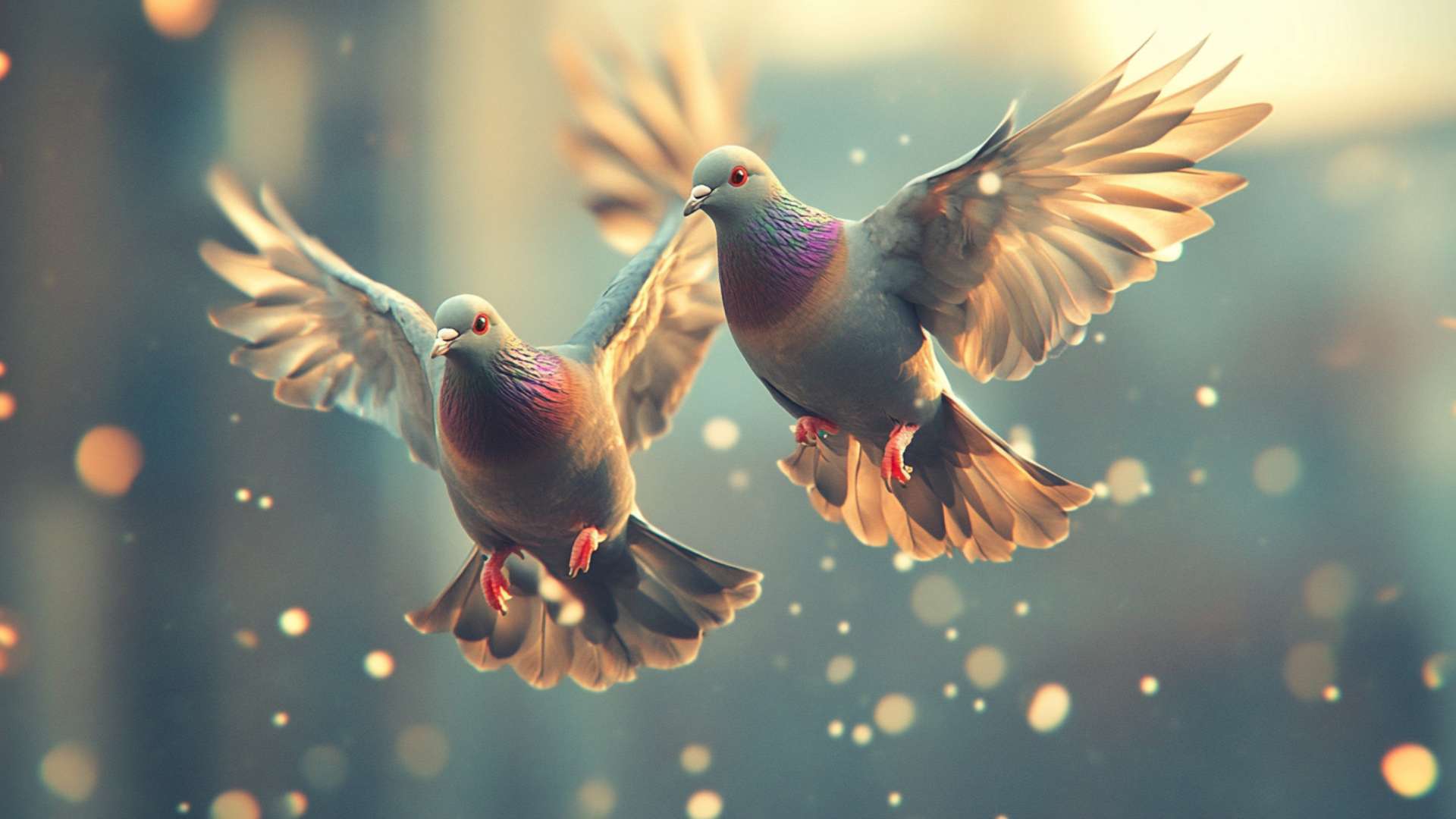Pigeons, those fascinating creatures that grace our cities, parks, and plazas with their presence, often go unnoticed in the hustle and bustle of urban life. However, if we take a moment to observe these remarkable birds, we can uncover the hidden beauty that lies within their feathers and their unique behavior.
Pigeons belong to the Columbidae family, which encompasses most species of doves and pigeons around the world. Their diversity is astounding; from the elegant Wood Pigeon with its subtle pastel plumage to the gentle Mourning Doves with their soft cooing calls or even the resilient Rock Pigeons that adapt effortlessly to urban environments.
Curiosity Awakens: What is a Flock of Pigeons Called?
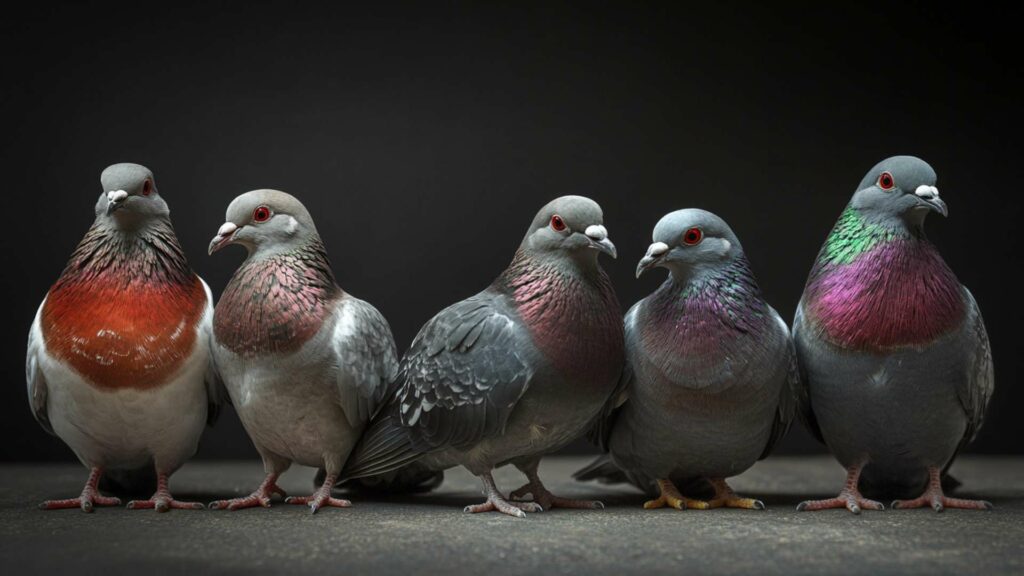
Now that we have marveled at their beauty and ubiquity, it’s time to unveil one particular aspect that piques curiosity among bird enthusiasts and linguists alike – what collective noun describes a group of pigeons flying predators? We encounter many species of birds throughout our lives, each with its own designated collective noun. For instance, when we hear about a group of geese flying overhead in a V formation or a parliament of owls perched on tree branches during twilight hours, it ignites our imagination.
But what about pigeons? Do pigeons migrate because they too possess an evocative term for their gatherings?
This question lingers in our minds as we witness countless pigeons going about their daily lives—pecking at crumbs near park benches or taking flight en masse when startled by an unexpected noise. The collective noun for such gatherings of flying pigeons might seem elusive at first glance since no commonly known term rolls off our tongues effortlessly like “flock” or “herd.” However, fear not!
There is indeed an appropriate collective noun for pigeons, one that accurately captures the essence of their communal existence. In the following sections, we shall explore various collective nouns associated with these captivating birds and unravel the intricacies that make them truly fascinating creatures.
Understanding Collective Nouns
Defining the Purpose of Collective Nouns
Collective nouns play an intriguing role in the English language, serving as a way to categorize a group of individuals or objects as a single entity. They allow us to describe large groups with just one word, making communication more concise and efficient.
In the vast animal kingdom, various creatures have their own unique collective nouns that capture the essence of their social structures. From “a pride of lions” to “a school of fish,” these terms not only simplify our conversations but also create vivid imagery in our minds.
Examples from the Animal Kingdom

Let’s explore some fascinating examples of collective nouns for other animals. When it comes to other birds only, we’re familiar with “a flock of seagulls” or “a murder of crows.” Even owls have their own collective noun: “a parliament.” Imagine those wise-looking birds sitting together, deliberating important issues! Meanwhile, turtle doves gather in enchanting groups known as “a pitying.” It’s quite poetic, isn’t it?
Moving beyond birds, we encounter captivating collective nouns for various species. For instance, in warmer areas where crocodiles thrive, you might stumble upon a remarkable sight called “a bask of crocodiles” lounging by the water’s edge.
On land, herds are commonplace among herbivores like zebras and elephants. But did you know that a group of elk is referred to as a “gang”?
Quite fitting for these majestic creatures! As we delve into these intriguing collective nouns from across the animal kingdom, it becomes clear that each term captures something unique about how different species interact and form social bonds.
Now let’s turn our attention back to pigeons and discover what collective noun best describes their gatherings.
Common Collective Nouns for Pigeons
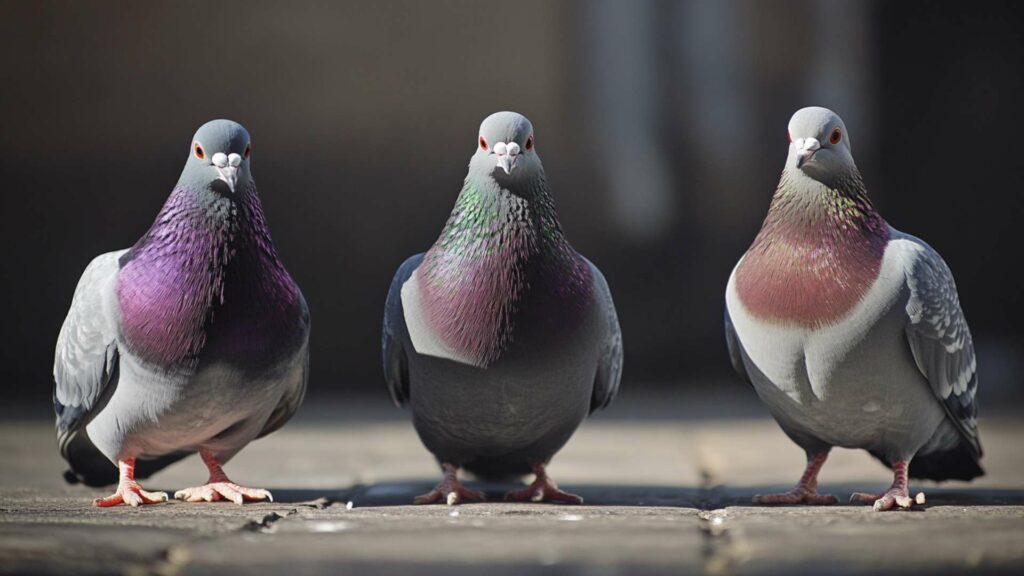
Flock – the most widely used term
When it comes to referring to a group of pigeons, the most common and widely recognized collective noun is a “flock.” This term has been used for centuries to describe gatherings of various bird species, including pigeons. The word “flock” carries a sense of unity, togetherness, and movement that is fitting for these social birds.
Pigeons are known to nest and congregate in large numbers, typically found in urban areas where food sources are abundant. Their preference for flocking together makes “flock” an apt choice as their collective noun.
Historical significance of “flock” in relation to birds
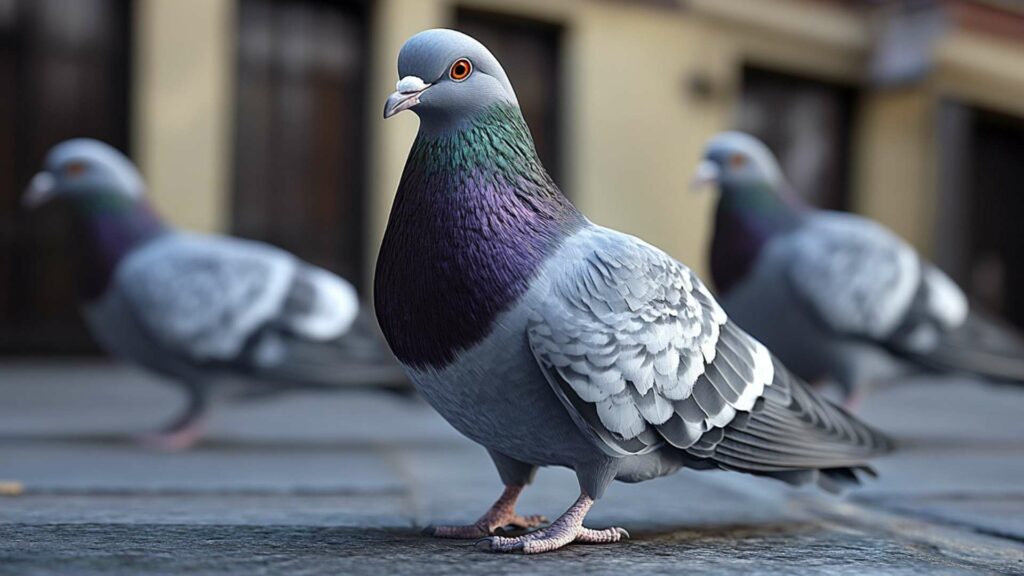
The term “flock” has a rich historical significance when it comes to describing groups of birds. It originates from Old English and can be traced back to its Germanic roots. In ancient times, people relied on the presence of flocks for various reasons such as hunting or migration patterns.
Observing flocks provided valuable insights into bird behavior and ecology. Over time, the term became ingrained in language and culture as a way to describe groups of birds collectively.
Explanation of why “flock” is suitable for pigeons
The choice of “flock” as the collective noun for pigeons is highly suitable due to their natural behavior and social dynamics. Pigeons are highly gregarious creatures that exhibit strong flocking tendencies throughout their lives. They form stable communities with complex social hierarchies, relying on group cohesion for survival and protection against predators.
Whether it’s wood pigeons roosting together in forested areas or homing pigeons training as part of a larger group, the concept of a flock captures the essence of how these birds interact with one another. It highlights their innate need for companionship, collective decision-making, and the sharing of resources.
The term “flock” holds historical significance and accurately represents the collective nature of pigeons. Their tendency to gather in large numbers and exhibit social behaviors makes this common collective noun a fitting choice.
Whether it’s carrier pigeons called upon for their navigational skills or wood pigeons nesting in warmer areas during the breeding season, most pigeons are best described as a flock. The use of “flock” emphasizes their sociability, unity, and shared experiences within their communities.
Lesser-Known Collective Nouns for Pigeons
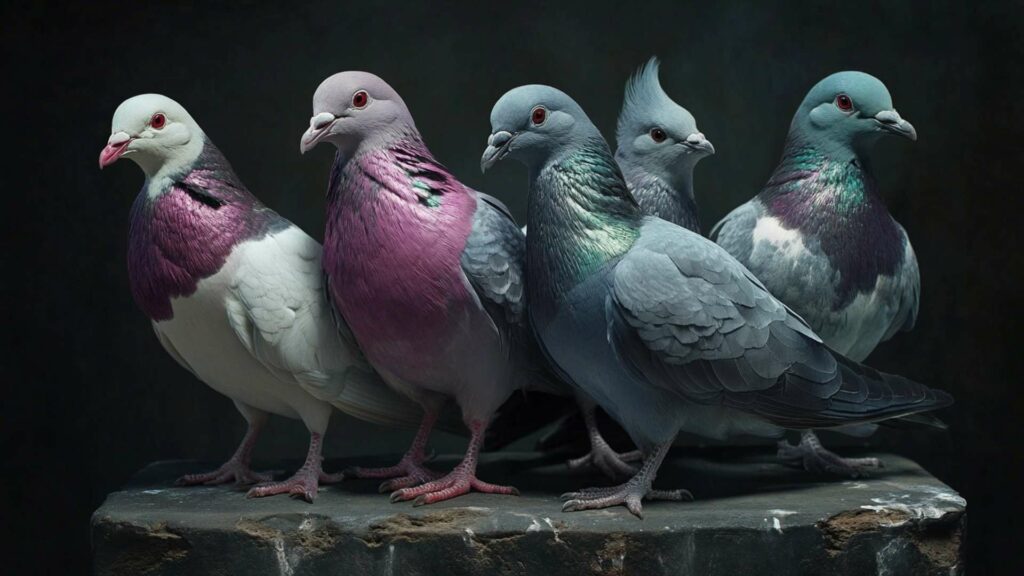
Kit – An Alternative Term with Historical Roots
When it comes to collective nouns for a group of pigeons called together, one lesser-known term that piques curiosity is “kit.” Originating from the Old English word “cyte,” which meant a small wooden container or basket, this historically rooted term found its way into the pigeon lexicon. The usage of “kit” as a collective noun for a group of pigeons can be traced back to pigeon keeping practices in the British Isles during medieval times. Back then, pigeon enthusiasts would keep their birds in kits, which were small enclosures resembling baskets or huts, often placed in lofts or cotes.
Origins and Usage of “Kit” as a Pigeon Collective Noun
While the term “kit” may not be as widely known today as other collective nouns for pigeons, it still retains significance among certain pigeon-keeping communities and enthusiasts. The use of “kit” to refer to a group of pigeons harks back to historical traditions and practices of tropical pigeons.
This unique word evokes images of quaint wooden enclosures filled with fluttering wings and cooing sounds. It adds an element of charm and nostalgia to our understanding of these remarkable birds.
Regional Variations in the Use of “Kit”
Like many aspects of language, regional variations exist when it comes to referring to a group of pigeons as a “kit.” While this term may have its roots in English culture, it is not commonly used worldwide. In fact, its usage is mostly prevalent in regions where pigeon keeping has historical significance or remains popular today.
For instance, you are more likely to hear the phrase “a kit of pigeons” within certain areas in the United Kingdom where pigeon racing or exhibition breeding is still cherished. However, it is worth noting that “kit baby pigeons” is not universally recognized as a collective noun for pigeons and may not be familiar to everyone.
While the term “kit” may not be as widely recognized as other collective nouns for pigeons, it carries historical significance and remains in use among certain pigeon-keeping communities. Its origins can be traced back to medieval practices in the British Isles, where pigeon enthusiasts utilized kits or small enclosures to house their birds.
Today, “kit” serves as a reminder of the rich cultural heritage associated with these remarkable creatures. So next time you spot a group of pigeons gracefully taking flight or perched upon an urban ledge, take a moment to appreciate the linguistic diversity that exists in our world and consider referring to them as a “kit.”
Regional Variations in Collective Nouns for Pigeons: Cote
In the United Kingdom, a regional variation in the collective noun for pigeons is “cote.” This term holds significant historical and cultural significance within the context of pigeon keeping. The etymology of “cote” can be traced back to Middle English and Old French, where it referred to a small shelter or coop for domesticated pigeons.
Over time, it became associated with feral pigeons and with larger structures that housed multiple pigeons. The use of “cote” as a collective noun for pigeons reflects the deep-rooted history of pigeon keeping in the UK.
Pigeon fanciers often built elaborate cotes to house their cherished birds, showcasing their dedication and passion for these avian creatures. This association with pigeon flocks creates a cultural significance around the term, evoking images of traditional pigeon lofts nestled in British landscapes.
Pigeon keeping has been an integral part of British heritage, with organized racing competitions dating back several centuries. The use of “cote” as a regional collective noun serves as a nod to this rich tradition and further strengthens its connections to pigeon husbandry.
Uncommon or Humorous Collective Nouns for Pigeons: Flight
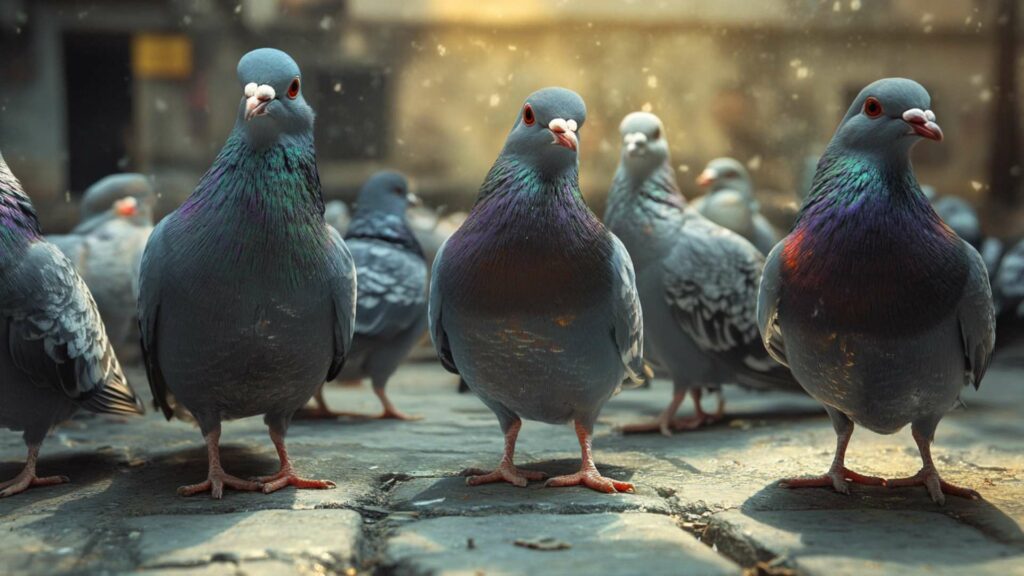
While not as widely used as “flock,” another poetic and uncommon collective noun for pigeons is “flight.” This term conjures up imagery of graceful birds soaring through the sky in unison. The symbolism associated with juvenile pigeons with flight represents freedom, agility, and elegance—qualities often admired in these avian creatures.
The use of “flight” as a collective noun extends beyond mere description; it carries deeper connotations in literature, art, and popular culture. Pigeons are often depicted taking flight together in iconic works of art or portrayed symbolically to represent notions such as peace or spirituality.
In literature, references to a “flight” of pigeons evoke a sense of movement and harmony among the birds. This collective noun captures the essence of pigeons as social creatures, highlighting their ability to navigate long distances and stay connected within a group.
Conclusion
The question “What is a flock of pigeons called?” opens up a world of interesting facts about linguistic diversity and imagination within the animal kingdom. While “flock” remains the most common collective noun for pigeons, regional variations such as “cote” in the United Kingdom provide insight into specific cultural contexts surrounding pigeon keeping.
Additionally, exploring uncommon or humorous collective nouns like “flight” adds depth and richness to our understanding of these fascinating birds. Symbolism associated with flight enhances our appreciation for pigeons’ remarkable abilities and their interconnectedness with literature, art, and popular culture.
Ultimately for many pigeons, embracing linguistic diversity allows us to celebrate unique terms coined by different cultures while connecting us to shared knowledge about these remarkable creatures. So next time you encounter a group of pigeons gracefully taking flight or perched together on rooftops, remember that language has given us various ways to describe their collective presence.
Prevent Pigeon Problems with D-Termination: Las Vegas’ Leading Pest Control Solution!

If you’re dealing with pigeon-related challenges, D-Termination is your go-to source for assistance. Our expert team excels in pigeon deterrence, restoring cleanliness and preserving the integrity of your space. Bid farewell to pigeons today – opt for D-Termination for highly effective pest control.
Contact us at 702-919-6310 or visit dtermination.com to schedule your pigeon control service and regain your space from these unwelcome pests.
Frequently Asked Questions:
A group of sparrows is commonly called a “flock.”
A gathering of magpies is often referred to as a “tidings” or “parcel.”
Pigeon flocks can vary in size but may consist of several dozen birds or more.
The plural form of “pigeon” is “pigeons.”

